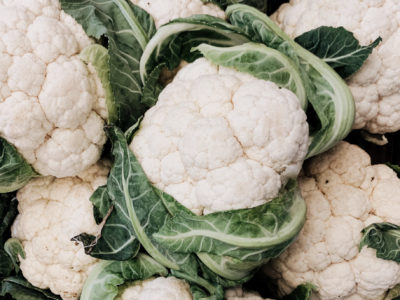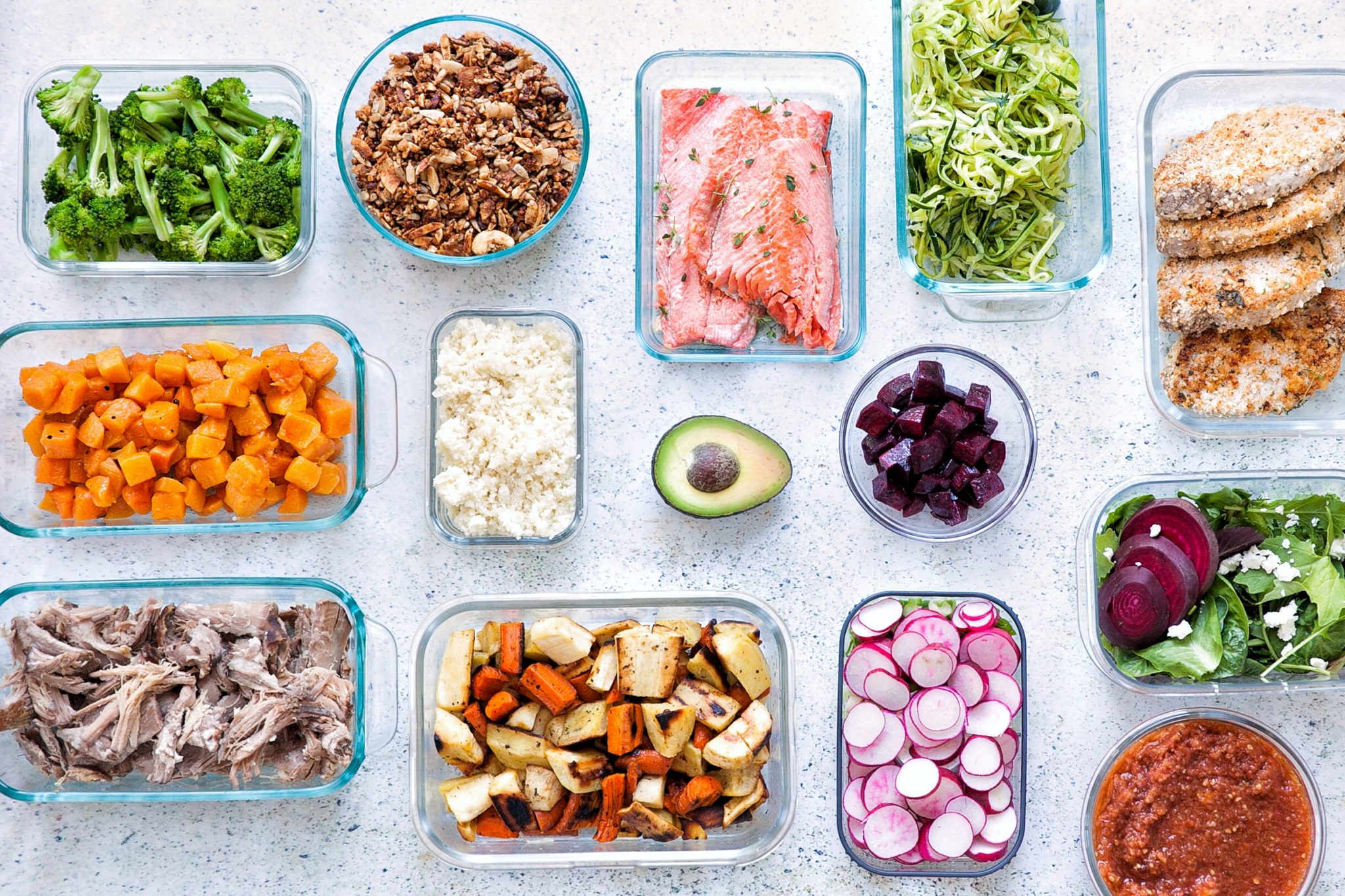Find your local farmers market!
Cauliflower is a nutritious white (or orange or purple!) vegetable that can be used in copious recipes to add different flavor and texture. There are several variations of the species, Brassica oleracea, making them close plant siblings to other members of the brassicaceae family, such as broccoli, brussels sprouts, cabbage, collard greens, and kale. The oldest record of cauliflower goes all the way back to the 6th century BC, with its origins in Europe. Containing limited macronutrients, cauliflower is mostly used as a “filler” or potato mimicker in Paleo recipes; I know that I’ve created near-countless recipes that utilize cauliflower to add a certain texture, but I also love it roasted!
Nutritionally, cauliflower is a powerhouse. It is an amazing source of vitamin C, with 100g containing 58% of your RDV. It also has moderate amounts of the plant-soluble forms of vitamins B5, B6, B9, and vitamin K1. It also contains trace amounts of vitamins B1, 2, 3; E; and assorted minerals. Like other members of the cabbage family, cauliflower is rich in phytochemicals, including isothiocyanates and glucosinolates; research shows that these potent antioxidants are maintained as long as the cauliflower is not boiled (but other cooking methods, like roasting, steaming, and stir-frying, are a go!).
Like other produce, you should try to find it at your local farmers’ market if you can. However, the Environmental Working Group has identified cauliflower as one of the “Clean Fifteen,” so you don’t need to bend over backwards to get organic if you’re trying to avoid pesticides.


 Lox
Lox
